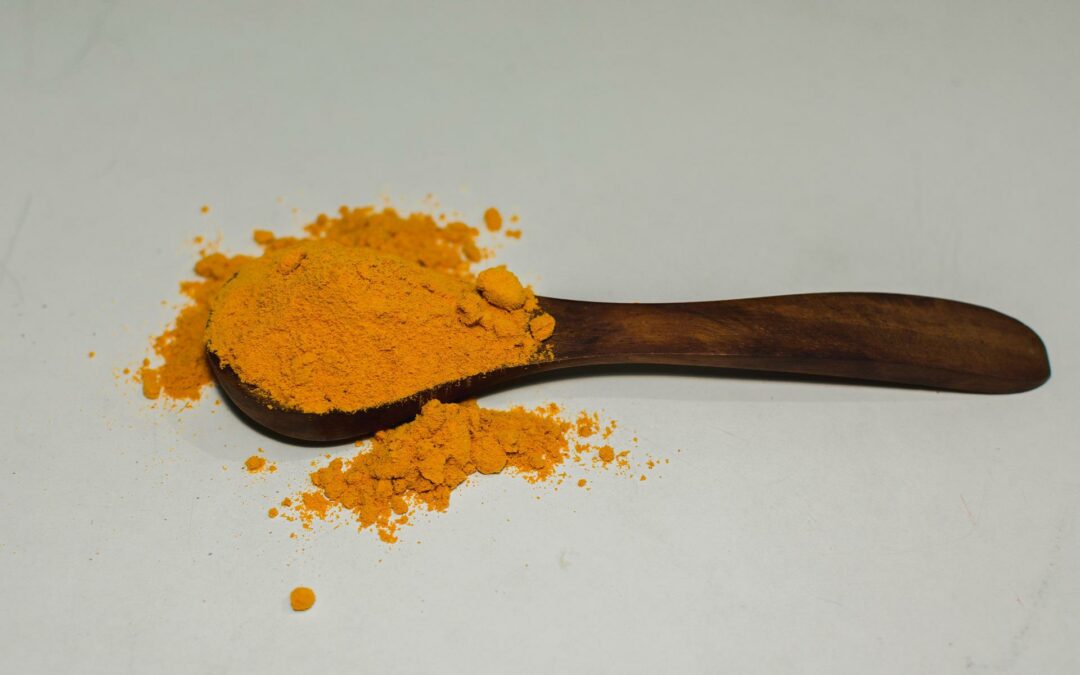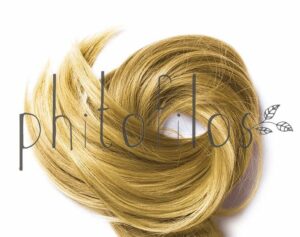Dyeing your hair naturally, with 100% vegetable henna hair dyes made with herbal powders, is even more fun (as well as healthy): it is a millenary tradition, but also for fans of a real art. Let’s try to involve you?
Natural herbal tints have been used by humans since time immemorial. Are chemical dyes more practical? it can also be, but dyeing with herbs does not only combine business with pleasure: in fact, in addition to dyeing them, vegetable dyes actually restructure the hair, also giving us immeasurable benefits, even for health (of the hair and more!). It is clear that if you choose to undertake the art of using dyeing herbs, it is good to know that we are talking about “tone-on-tone” coloring and
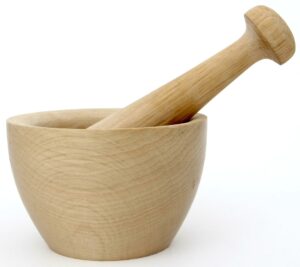
that only certified vegan herbal powders without picramato should be chosen for use, a choice that we at Erboristeria Como have made for our customers from the beginning. Isn’t it a satisfaction knowing how to mix the right herbs as in the past and obtain “your” color?
Hair dye herbs: how they act on the hair and what they are
Henna and other hair dyeing herbs act thanks to the presence of some precursors such as lawsone which, once released from the plant, is able to adhere firmly to the surface of the hair through Michael’s reaction and to color it. After a few applications, the pigments stratify, also increasing the thickness of the hair, restructuring it and making it more full-bodied and more resistant to breakage.
Thanks to the variety of dyeing herbs and the many combinations it is possible to obtain a wide range of colors. Among the best known dyeing herbs there are: turmeric, rhubarb, lawsonia, indigo, cassia, hibiscus, camping wood, walnut husk, hazelnut, madder and red sandalwood, barberry. However, not all of them bind to the keratin of the hair in the same way, so those who have to cover gray hair should keep this in mind. For example, Indigofera tinctoria was already used by the ancient Egyptians: the leaves were fermented in water, dried and finally chopped. However, the Indigo powder has dyeing power on the hair but only if used with Lawsonia inermis, as it is not able to bind to keratin by itself.
Colors: how they can be classified
Each color can be described, according to the colorimetry, with three main attributes: hue, saturation, brightness. The colors can be classified into: chromatic colors (red, green, blue, cyan, magenta, yellow, orange or orange, purple or violet) and achromatic (white, black, gray).
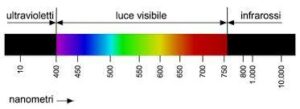
Or in spectral (present in the spectrum of sunlight) and non-spectral (colors absent from the spectrum of sunlight). The visible spectrum, included in the wavelength range between 380 nm and 760 nm, can be divided into 5 spectral colors (red, yellow, green, cyan and blue) and 2 non-spectral (red and magenta), therefore in 7 intervals. Red, as you can see, can be either a spectral or a non-spectral color. The dominant wavelength is used to identify the spectral colors, the complementary wavelength for non-spectral colors.
Furthermore, colors can be defined as saturated or unsaturated. Saturated colors are pure colors, due to monochromatic radiation. The 3 reference wavelengths for monochromatic color radiation: red (700 nm), green (546.1 nm), blue (435.8). A saturated color is desaturated by union with white, black, or gray, and becomes unsaturated, that is, bleached, blackened, graying. Unsaturated colors are impure colors, due to polychromatic radiation (eg sunlight). They have a spectrum made up of different wavelengths, but a single wavelength that represents them: the dominant wavelength for the spectral ones and the complementary one for the non-spectral ones.
Primary, secondary, tertiary colors …
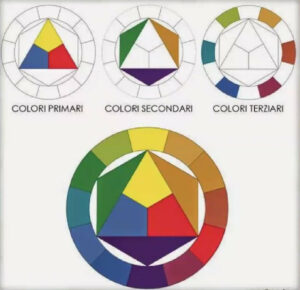
Who among us has never heard of the classification of colors in primary, secondary, tertiary, etc. as a child? Primary colors are colors that when combined together give rise to all possible colors. The secondary colors are obtained from the union of the primary colors, the tertiary from the union of the primary and secondary colors, and so on.
For example: starting from a blond (yellow), mixing yellow with a range of colors tending towards red we would obtain a blond with a “warmer” tint, mixing yellow with colors tending to blue we would obtain a “colder” blond. . In the case of vegetable herbs with pigment, depending on the herbs we mix we get warmer or colder colors, based on the color of the pigment they have. Looking at the image on the right, the quadrant on our right hosts the warm colors, the one on our left the cold colors.
Colors: additive or subtractive synthesis
Colors can be obtained by additive or subtractive synthesis: for example, a white sheet can be colored by illuminating it with light of that color (color-light), or by covering it with a colored substance of that color (color-pigment) and at the same time illuminating it with light. white. Additive synthesis is observed with light-colors, subtractive synthesis with pigment-colors. We can therefore affirm that additive synthesis is the mixture of light colors and is obtained by joining light beams; the subtractive synthesis is the mixture of pigment colors and is obtained by union of pigments (such as those present in henna).
Hair dye herbs: How to choose your shade
 With the dyeing herbs you have to work tone on tone. It starts from your base, you can choose the reflections you want to obtain, and if you already have some white hair you must take this into account to mix more covering pigments, which bind better to the keratin, from others less covering but which together with the more covering give the color desired.
With the dyeing herbs you have to work tone on tone. It starts from your base, you can choose the reflections you want to obtain, and if you already have some white hair you must take this into account to mix more covering pigments, which bind better to the keratin, from others less covering but which together with the more covering give the color desired.
Are you ready? don’t you feel a bit like a painter who is choosing colors for his canvas? well, now let’s get help from the theory of colors, and from a fairly practical and effective tool: the Ostwald star. Now choose the nuance you want to get from those we will list.
Blond hair: the nuances that you could evaluate
The most used herbs that give us the blond in various shades are: chamomile, turmeric, rhubarb, barberry (which, however, always requires to be mixed with mucilage plants such as marshmallow or fenugreek). From the point of view of color theory, yellow can be cooled by mixing blue (eg Indigofera tinctoria) and heated by mixing red (for herbs, lawsonia is an example).
Auburn blonde
The coppery blond is obtained with Chamomile Blend, ideal for light blond hair; offers a very warm golden, excellent coverage for white hair. It is a mix of Cassia obovata leaves (slight golden yellow), Chamomile recutita flowers (yellow), Rhubarb root (yellow), Lawsonia inermis leaves (red).
For white hair, the laying time of Chamomile Blend can vary from 60 to 90 minutes depending on the amount of whites and the intensity to be obtained. In the latter case, to cool the tone, you can replace 50% of cold blond corrector with Barberry (which to spread it needs to be associated with mucilaginous plants such as marshmallow or fenugreek). With the latter you will get a cold blond with a fair coverage of white hair. To cool Chamomile Blend you can alternatively use a hint of black henna.
To “warm up” the camomile blend further, you will opt for red henna instead. That’s not all. You can strengthen Chamomile Blend in its blonde shade by adding rhubarb or ash blonde with Hazelnut. Furthermore, to obtain warmer or darker shades you can work with Walnut Hull Blend, Dark Blond or Camping Blend (in the latter case you will get a nice caramel color!).
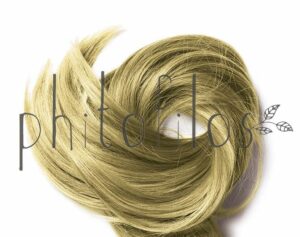 And for hair without whites?
And for hair without whites?
a shutter speed of even 40-45 minutes is sufficient if you are satisfied with a color that is not too intense by increasing the shutter speed you get a more intense color; if you want to “cool” instead it would be enough to correct with the Biondo Freddo corrector, a tone corrector for too intense golden-copper blondes. This concealer is to be chosen to turn off the coppery yellow of the Chamomile Blend but not to be applied on white hair, as it has a light greenish-yellow soul. In fact, the cold blond mixture contains powders of: Rhubarb root, pomegranate peel, Cassia Obovata leaves, Indigofera Tinctoria leaves.
Light golden blonde
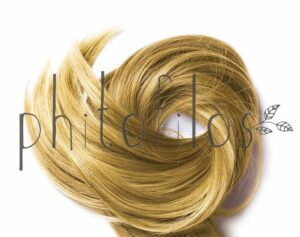
It is a blend very similar to Chamomile Blend, but without the coppery effects, but rather golden. This is because unlike the Chamomile Blend which also contains rhubarb, the light golden blonde is a blend of herbs that does not include rhubarb but turmeric. This blend also offers excellent coverage of whites.
Dark blond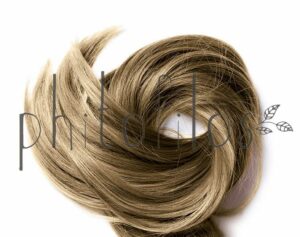
Using the “Dark blond” mixture, given by the powder mix of Indigofera Tinctoria leaves (green-blue pigment), Lawsonia Inermis leaves (red), Juglans Regia husk, Juglans Regia leaves, on blond, light or dark backgrounds, or ash, you get nice cool dark blond nuances; on light brown backgrounds it brings shine to the hair. It should be noted that dark blond does not lead to warm coppery reflections even at long exposure times, because it contains a low percentage of lawsonia, but it covers white hair very well.
The highlights of blondes
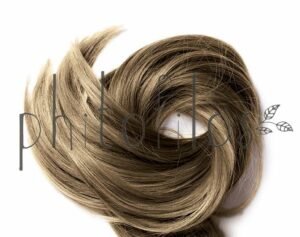 The Hazelnut Blend (mix of Indigofera Tinctoria leaves, Lawsonia Inermis leaves, Juglans Regia husk, Rhubarb root) also contains Indigofera, “cold”, and is an excellent reflex blend for blondes to obtain the ash blonde shade (60% hazelnut and 40% chamomile blend for a light ash blonde; 80% hazelnut and 20% barberry for a very cold and light ash blonde). Also, it browns your blonde hair with warm golden tones without darkening it too much. On white backgrounds, Hazelnut gives a shade similar to ash blonde, varying between a straw blonde and a dark blonde as it is stratified with repeated passages over time. On light brown hair, on the other hand, it gives cold reflections and combined with Walnut Hull Blend allows you to obtain a medium-light brown, neither hot nor cold.
The Hazelnut Blend (mix of Indigofera Tinctoria leaves, Lawsonia Inermis leaves, Juglans Regia husk, Rhubarb root) also contains Indigofera, “cold”, and is an excellent reflex blend for blondes to obtain the ash blonde shade (60% hazelnut and 40% chamomile blend for a light ash blonde; 80% hazelnut and 20% barberry for a very cold and light ash blonde). Also, it browns your blonde hair with warm golden tones without darkening it too much. On white backgrounds, Hazelnut gives a shade similar to ash blonde, varying between a straw blonde and a dark blonde as it is stratified with repeated passages over time. On light brown hair, on the other hand, it gives cold reflections and combined with Walnut Hull Blend allows you to obtain a medium-light brown, neither hot nor cold.
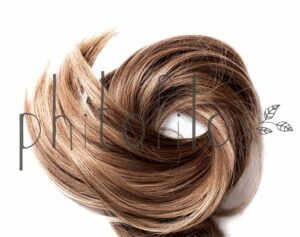
Walnut husk blend contains: Juglans Regia mallo, Lawsonia Inermis leaves, Indigofera Tinctoria leaves. It is also “cold”, unlike Hazelnut, it does not contain rhubarb. It is an excellent blend for blondes and browns and gives warm amber shades. On medium-dark blond backgrounds, held at low shutter speeds, it is an ideal blend for obtaining golden blond veins. On brown backgrounds, on the other hand, it gives chestnut tones and if you add dark colors such as those of Katam or black henna (based on Indigofera), it will enhance the dark and cold soul.
Madder, from Rubia cordifolia root, with a reddish-coppery hue, slightly “warming”: combined with the Chamomile Blend it leads to apricot nuances.
I capelli rossi e ramati: le nuance che potresti valutare
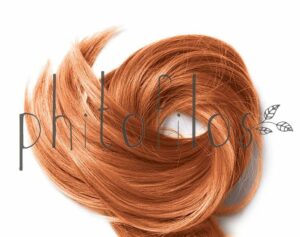 rosso n.2
rosso n.2 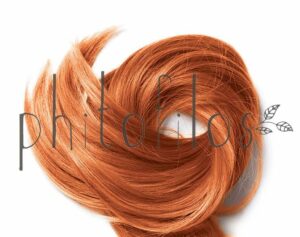 rosso n.3
rosso n.3
Red henna no.2 is pure lawsonia and gives slightly duller and darker coppery tones than red henna no.3. Provides excellent coverage of gray hair. It is necessary to add darker shades, such as those of Katam or black henna to brown it. Henna no.3 gives bright and shiny light copper tones, more vivid than no.2, and also ensures maximum coverage of white hair. Added to rhubarb or turmeric in a ratio of 1 to 2.5 of henna no. 3, it gives Irish red while adding katam or black henna, henna 3 will brown.
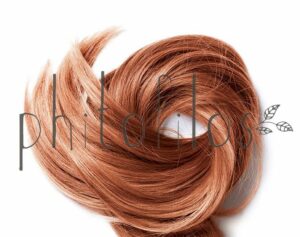 Cherry Red Blend: it has been formulated to obtain the cold tones of red. It contains: madder root, Lawsonia Inermis leaves, Pterocarpus Soyauxii wood (red sandalwood), hibiscus flowers. On light blondes it gives the shade of dark copper-Irish, on dark blondes and light browns it gives the red par excellence (45-120 minutes of application); to intensify the reflection, a second step of the same mixture can be repeated, also with the addition of Madder powder. On medium-dark browns it gives the shades of mahogany (60-90 minutes of application).
Cherry Red Blend: it has been formulated to obtain the cold tones of red. It contains: madder root, Lawsonia Inermis leaves, Pterocarpus Soyauxii wood (red sandalwood), hibiscus flowers. On light blondes it gives the shade of dark copper-Irish, on dark blondes and light browns it gives the red par excellence (45-120 minutes of application); to intensify the reflection, a second step of the same mixture can be repeated, also with the addition of Madder powder. On medium-dark browns it gives the shades of mahogany (60-90 minutes of application).
Red reflectors and correctors
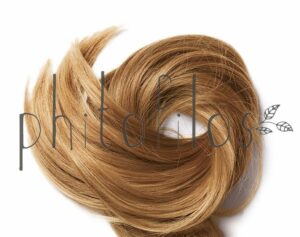 Among the reflectors there is the Camping Blend, which although not pure copper, thrives on multiple reflections. It could be defined as a “blond-brown-auburn” and on dark blondes it gives the caramel nuance. Camping blend contains indeed: Haematoxylon Campechianum bark (“camping wood”), Lawsonia Inermis leaves, Juglans Regia mallo.
Among the reflectors there is the Camping Blend, which although not pure copper, thrives on multiple reflections. It could be defined as a “blond-brown-auburn” and on dark blondes it gives the caramel nuance. Camping blend contains indeed: Haematoxylon Campechianum bark (“camping wood”), Lawsonia Inermis leaves, Juglans Regia mallo.
Among the correctors there is for example the Red Sandal: it is a very light cold corrector of red and should be used in small doses / 10-20%) to obtain good results; its function is to act as a binder between the lawsonia and the other correctors of the cold tones of red and both as an activator of the latter, as for the Robbia for example. Nagar Motha, on the other hand, or Cyperus Scariosus, would dampen and remove too bright red reflections.
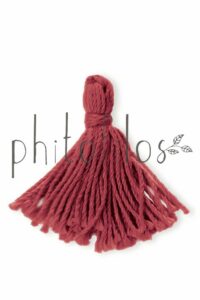 The Madder powder is ideal as a tone corrector to obtain rosy-violet nuances and is useful for attenuating the bright coppery reflections of the lawsonia. Its main dyeing pigment is alizarin contained in the root of the plant. In Ayurvedic medicine, madder is attributed multiple beneficial properties, especially soothing. It is recommended to use this powder always in combination with other powders to obtain good batters. If we add Madder to Red Henna No.2 or No.3 it helps to obtain redder shades and less copper, combined with the Chamomile Blend instead leads to apricot shades.
The Madder powder is ideal as a tone corrector to obtain rosy-violet nuances and is useful for attenuating the bright coppery reflections of the lawsonia. Its main dyeing pigment is alizarin contained in the root of the plant. In Ayurvedic medicine, madder is attributed multiple beneficial properties, especially soothing. It is recommended to use this powder always in combination with other powders to obtain good batters. If we add Madder to Red Henna No.2 or No.3 it helps to obtain redder shades and less copper, combined with the Chamomile Blend instead leads to apricot shades.
Plum and aubergine hair: the nuances that you could evaluate
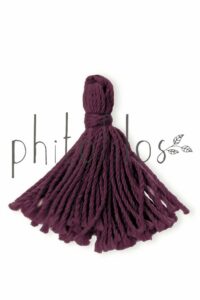 We are in the range of red, purple, blue. These colors can be obtained with a double step: first step with lawsonia (red henne 2 or 3) or cherry red and as a second step, basified aubergine. The longer you hold in aubergine pose the more you dye your hair on the purplish color. In fact, aubergine blend contains: camping wood (red-purple), madder root (red-coppery-pink), Indigofera Tinctoria leaves (blue-greenish), Lawsonia Inermis leaves (red).
We are in the range of red, purple, blue. These colors can be obtained with a double step: first step with lawsonia (red henne 2 or 3) or cherry red and as a second step, basified aubergine. The longer you hold in aubergine pose the more you dye your hair on the purplish color. In fact, aubergine blend contains: camping wood (red-purple), madder root (red-coppery-pink), Indigofera Tinctoria leaves (blue-greenish), Lawsonia Inermis leaves (red).
Brown hair: the nuances you could evaluate
According to the theory of colors, the color brown is given by yellow, red and blue. There are no plants that give the brown color: the brown color on the white must be built, mixing several plants with respectively yellow red and blue pigments. According to the way of mixing them I will get cold and dark brown or a medium brown, or warm and light. The greater the presence of yellow, the lighter the result (perhaps in shades of beige); the greater the presence of red and the warmer the shade of brown we will obtain, the greater the presence of blue and the darker and colder the tone of the brown.
Brown with no white hair
If you start from a brown base and I have to cover some whites, among the highlights for the browns there is a mixture of walnut husk and hazelnut. A mixture of walnut husks on brown backgrounds gives chestnut tones, while with the addition of black henna or katam you get the dark brown and cold. In fact, black henna has a blue-green pigment and is the ideal concealer for any cold or dark tone. The hazelnut browns without darkening the golden blonde hair too much, and if we combine it with Walnut Hull Blend we get medium-light brown hair.
To cover the whites with the hazelnut, you need to do a double step: red henna 3 and hazelnut (in a 2: 1 ratio) first and black and hazelnut henne (in a 2: 1 ratio) afterwards. Madder, on the other hand, gives a rosy brown reflection on light brown bases. Camping Blend is ideal on medium-light backgrounds to obtain warm shades: it offers round and shiny coppery brown tones, while on whites it gives a fair coverage, obtaining a dark blonde / light brown coppery / coppery.
Brown with white hair
Finally, a clarification is needed: in the presence of white hair, double passes are required to obtain brown, and the first pass (40-45 minutes) should be with 2 or 3 red henna, highly opaque; and if necessary Cherry red to go towards darker tones. As a second step, lasting about 1 hour and a half, you can then proceed with:
- for light brown: Hazelnut for a luminous light brown, or with Walnut Hull Blend for a light coppery brown.
- for medium browns: Black henna for medium warm brown; basified black henna for medium cool brown.
- dark browns, browns up to blacks: 60% basified black henna and 40% katam with pastel gel for a cool dark brown. The longer the shutter speed, the darker they will be.
Black hair: the nuances you could evaluate
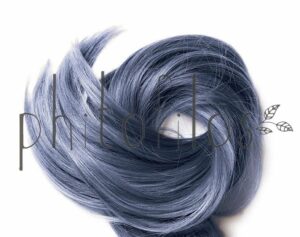 Black henna, Indigofera pura, is a bluish green pigment, not as black as one might think. Therefore, for those with black hair, on whites they must first make a passage with lawsonia as well as black henna, to avoid unpleasant effects. Lawsonia is more opaque and would contrast, as red, the bluish green pigment giving a dark brown. It is usually recommended to basify the black henna with a teaspoon of baking soda to increase its cool reflections.
Black henna, Indigofera pura, is a bluish green pigment, not as black as one might think. Therefore, for those with black hair, on whites they must first make a passage with lawsonia as well as black henna, to avoid unpleasant effects. Lawsonia is more opaque and would contrast, as red, the bluish green pigment giving a dark brown. It is usually recommended to basify the black henna with a teaspoon of baking soda to increase its cool reflections.
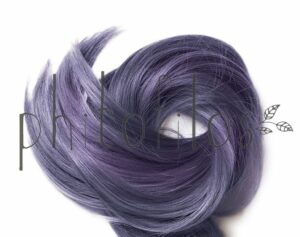 Katam (Buxus Dioica leaf powder) on the other hand is similar to black henna but is a darker and cooler purplish blue pigment. In dark mixes a good proportion is 60% basified black henna and 40% katam.
Katam (Buxus Dioica leaf powder) on the other hand is similar to black henna but is a darker and cooler purplish blue pigment. In dark mixes a good proportion is 60% basified black henna and 40% katam.
Conclusions
All these tips are to give an idea of the theory behind the art of dyeing herbs, it is obvious that then personally each of us has a starting point from which to start and many evaluations to make, starting from the assumption that with colors you can play with herbs but herbs do not lighten, they are not chemical dyes, they work “tone on tone”: if you wanted to try to do it, it would still take more steps to do. Generally for our henna if you need to prepare them with lemon juice, yogurt or vinegar it is already indicated on the sachet. If you are also interested in advice on how to prepare the batter, read our blogs or read our product sheets. And if you need help, feel free to ask our staff, we will help you!
Dr. Laura Comollo
Follow us on our Facebook and Instagram channels
ALL RIGHTS RESERVED, THIS TEXT CANNOT BE REPRODUCED WITHOUT THE EXPRESS AUTHORIZATION OF ERBORISTERIACOMO.IT
The information contained in this site is presented for informational purposes only, in no case can they constitute the formulation of a diagnosis or the prescription of a treatment, and do not intend and must not in any way replace the direct doctor-patient relationship or the specialist visit. . It is recommended that you always seek the advice of your doctor and / or specialists regarding any indication reported.

